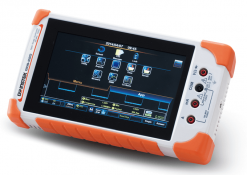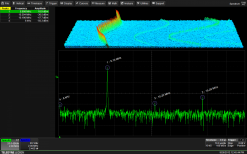Aktuelle Promotionen
Application Notes - Power
Hier finden Sie Application Notes, Technical Notes, White Papers, Fachartikel in Bezug zu Power Anwendungen.
-
N4L-Application-Note-Power-Analyzer-Efficiency-Measurement-of-Traction-Motors (E)

Efficiency measurements of DC-AC converters is a key part of the EV traction system development process, accurate and reliable measurement is a key priority for any test and development engineer. This article discusses important aspects of efficiency measurement that a power analyzer will need to address.
-
N4L-Application Note-Power Analyzer-Electromagnetic Compatibility – IEC61000 - 3 - 3:2013 A Technical Guide to Flicker Measurement (E)
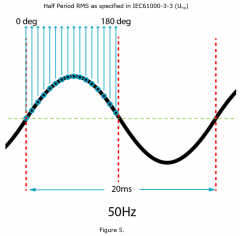
This technical article will discuss the Electromagnetic Compatibility (EMC) IEC61000-3-3:2013 testing standard, including relevant extracts from IEC61000-4-15 (instrumentation oriented standard) and explanations relating to analysis of voltage fluctuations and flicker on public low voltage supply systems. We will also describe how N4L ensure full compliance to the standard, including our Harmonics and Flicker Analyzer (PPA5511/PPA5531), AC Power Source and Impedance Network (Zref).
-
Teledyne LeCroy-Application Note-Oszilloskop-Analyzing Power Semiconductor Devices (E)
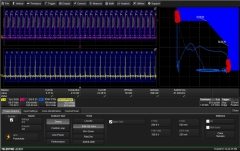
Power electronics systems require optimized design to minimize device switching, conduction, and off-state losses. Having tools that provide more insight into device losses provides the designer with more confidence in power electronics reliability under all operating conditions. Teledyne LeCroy's PWR software option provides an exceptional ability to measure and analyze the operating characteristics of power conversion devices and circuits. The software easily performs all aspects of device analysis such as device instantaneous power, switching losses, safe operating area (SOA), saturation voltage, dynamic on-resistance, dv/dt or di/dt, and saturation hysteresis curves of magnetic devices.
-
Teledyne LeCroy-Application Note - Power-1 - The Fundamentals of Power Part I (E)

Ask any number of engineers to define "power" and you'll get any number of answers, and none of them would necessarily be wrong. Sometimes it's just a matter of perspective.
-
Teledyne LeCroy-Application Note - Power-2 - The Fundamentals of Power Part II (E)

Having reviewed a broad definition of power, how it is generated and distributed, and how motors consume almost half of all generated power, we will now turn to a more detailed discussion of just what it is that we call "power." When we discuss "power," we're typically referring to what comes out of a wall socket: AC line, or sinusoidal, power.
-
Teledyne LeCroy-Application Note - Power-3 - The Fundamentals of Power - Three-Phase Sinusoidal Voltages (E)
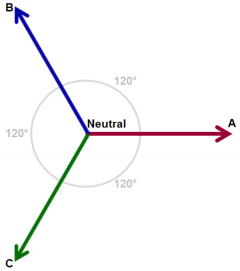
In a previous post, we briefly covered the basics of single- and three-phase AC power systems. Single-phase systems, as we've noted, comprise a single voltage vector with a magnitude (in VAC) and a phase angle. Of course, a three-phase voltage consists of three voltage vectors and three phase angles. This installment will go on to describe three-phase AC voltages in similarly brief fashion.
-
Teledyne LeCroy-Applikationsschrift - Power-1 - Grundlagen der Leistungselektronik Teil I (D)

Fragen Sie Ingenieure oder Techniker nach der Definition von Power oder elektrischer Leistung, so werden Sie ganz unterschiedliche Antworten erhalten. Die Beschreibungen sind nicht zwingend falsch, sondern oft eine Angelegenheit der Applikation und der Sichtweise.
-
Teledyne LeCroy-Applikationsschrift - Power-2 - Grundlagen der Leistungselektronik Teil II (D)

Nachdem wir eine breite Definition von Energie, wie sie erzeugt und verteilt wird und wie Motoren fast die Hälfte der gesamten erzeugten Energie verbrauchen, kommen wir nun zu einer detaillierteren Diskussion darüber, was es ist, was wir "Energie" nennen. Wenn wir über "Strom" sprechen, meinen wir typischerweise, was aus einer Steckdose kommt: Wechselstromleitung oder sinusförmige Leistung.
-
Teledyne LeCroy-Applikationsschrift - Power-3 - Grundlagen der Leistungselektronik Dreiphasige Sinus-Spannungen (D)

In Grundlagen der Leistungselektronik Teil II haben wir kurz die Grundlagen der ein- und dreiphasigen Wechselstromsysteme behandelt. Einphasen-Systeme bestehen, wie wir bereits erwähnt haben, aus einem einzigen Spannungsvektor mit einer Größe (in VAC) und einem Phasenwinkel. Natürlich besteht eine dreiphasige Spannung aus drei Spannungsvektoren und drei Phasenwinkeln. In dieser Ratenzahlung werden die dreiphasigen Wechselspannungen in ähnlich kurzer Form beschrieben.
-
Teledyne LeCroy - Note d'application - Puissance-1 - Les Fondamentales de la Puissance Part I (F)

Demandez à n'importe quel nombre d'ingénieurs de définir la "puissance" et vous obtiendrez n'importe quel nombre de réponses, et aucune d'entre elles ne serait nécessairement fausse. Parfois, c'est juste une question de perspective.
-
Teledyne LeCroy - Note d'application - Puissance-2 - Les Fondamentales de la Puissance Part II (F)

Après avoir passé en revue une définition large de l'énergie, la façon dont elle est produite et distribuée et la façon dont les moteurs consomment près de la moitié de toute l'énergie produite, nous allons maintenant passer à une discussion plus détaillée de ce que nous appelons l'" énergie ". Lorsque nous parlons d'" alimentation ", nous faisons généralement référence à ce qui sort d'une prise murale : Puissance de ligne AC, ou sinusoïdale.
-
Teledyne LeCroy - Note d'application - Puissance-3 - Les Fondamentales de la Puissance - Tensions sinusoïdales triphasées (F)

Dans Les Fondamentales de la Puissance Part II, nous avons brièvement couvert les principes de base des systèmes d'alimentation CA monophasés et triphasés. Les systèmes monophasés, comme nous l'avons noté, comprennent un vecteur de tension unique avec une amplitude (en VAC) et un angle de phase. Bien sûr, une tension triphasée se compose de trois vecteurs de tension et de trois angles de phase. Cet article décrira brièvement les tensions triphasées de la même façon.
Tameq Schweiz GmbH
Im Hof 19
CH-5420 Ehrendingen
Tel: +41 56 535 74 29
Fax: +41 56 535 94 97
Mob.: +41 78 704 56 51
Email: mail@tameq.ch

